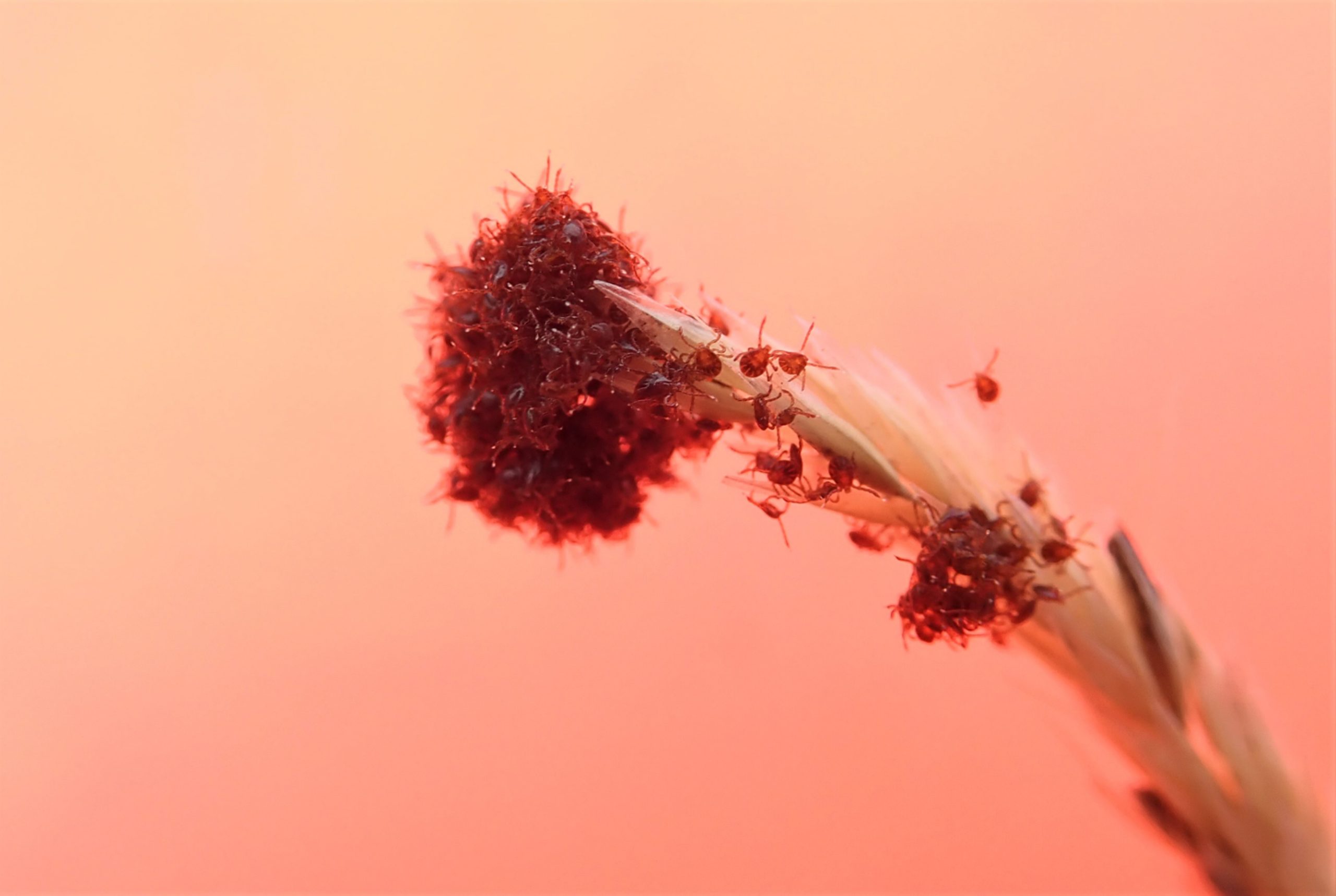Image Description: Hundreds of winter tick larvae, each the size of a poppyseed, wait patiently with arms outstretched, “questing”. They have climbed to the tip of a blade of grass and will grab onto a passing moose, elk, caribou, or deer on whom they will spend the next 6 months feeding on blood, growing, and mating. These tiny vampires join forces with one another, linking arms and masses so that an unfortunate host can obtain as many as 50,000 – 60,000 ticks in a single year. Moose with high numbers of winter ticks suffer from loss of blood, hair loss and may eventually die. What is remarkable about this image is that these winter ticks are questing in Yukon, Canada, under conditions much further north of where they were thought to be able to survive. Before this picture was taken in 2019, larval winter ticks had not previously been recorded in the Yukon, although adults of this species had been collected on hunted animals. This research is part of a collaboration between the University of Toronto Scarborough and the Yukon Government, to detect and monitor winter ticks in the territory and to predict their potential impact on moose and other host animals under climate change. By studying where in the environment larval ticks are found, we hope to understand more about their physical tolerances in warmer, wetter conditions, to inform future monitoring efforts and sampling priorities. Additionally, this work has helped to raise awareness of winter ticks among local and First Nations hunters and to build capacity for long-term community-engaged monitoring of wildlife health in the North.
Why did you conduct this research? Understanding when and where parasites, such as ticks, are found in the environment is important for keeping people and wildlife healthy. I am interested in finding new ways of conducting scientific research and bringing communities together to monitor emerging threats of invasive species, parasites, and diseases to inform biodiversity conservation for the future. Concerns that a warmer climate may drive ticks into novel northern populations led to the collaboration with Yukon Government and discussion with local communities to find out more about winter ticks in the territory.
Technique: Time is limited when sampling in the field – particularly in September in Yukon when a keen lookout for bears and elk is always required! I used an Olympus Tough TG-5 digital camera on a macro setting and held my bright orange field clipboard behind the ticks to reduce movement from the wind before snapping this shot in situ.
Acknowledgements: This research was possible due to two fellowships awarded to me from the Wildlife Conservation Society (WCS) Canada W. Garfield Weston Foundation (2018, 2019), Climate Change Preparedness in the North funding from Crown-Indigenous Relations and Northern Affairs Canada (CIRNAC) to collaborator Jane Harms at the Yukon Department of Environment and my primary supervisor Péter Molnár, and support from my second supervisor Nicholas Mandrak.

